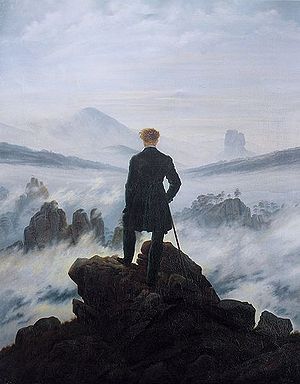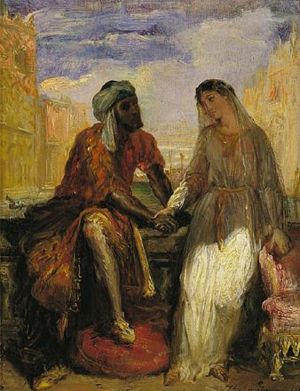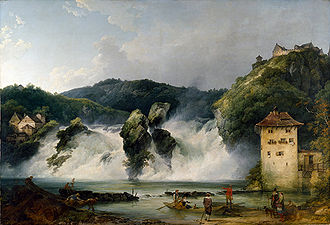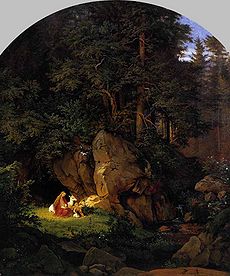Romanticism
 From Conservapedia
From Conservapedia 
Romanticism was an innovative artistic, musical, and literary movement in the early 1800s which emphasized feelings, and nature. The Romantic period of art was also a period of rebirth for religious values. Romanticism opposed elements of the Enlightenment that emphasized rationalism at the expense of human emotion and imagination. In writing, Romanticism elevated the common man, nationalism, freedom, and the supernatural, while also glorifying nature. In music, the Russian composer Tchaikovsky epitomized this movement.
The term "Romanticism" was coined because it originated in European regions of the "Romance Languages," namely French, Spanish and Italian. Novelist Victor Hugo led this movement in Europe with his works readable by the common man. German and British Romanticism followed soon after. Other countries such as America and Canada also had Romantic art movements.
American literature typifying this era include Herman Melville's Moby Dick, Edgar Allan Poe's writings, Ralph Waldo Emerson, Nathaniel Hawthorne, Henry David Thoreau, and Walt Whitman. Even inventors including Samuel Morse, who originated the Morse code, were inspired by Romanticism.
Eugene Delacroix (1798-1863) was perhaps the most important of the French Romantic painters; in English literature, the Lyrical Ballads (1798), poems co-authored by William Wordsworth and Samuel Taylor Coleridge was an early example of this movement.
Romanticism notably had different subgenres, as Dark Romanticists like Edgar Allan Poe and Nathaniel Hawthorne notably emphasized the grotesque and Gothic themes more in their literature.



Chassériau, Othello and Desdemona in Venice.
Contents
- 1 Key Artists
- 2 Key Authors
- 3 In Literature
- 4 See also
- 5 External links
Key Artists[edit]

- William Blake
- Henry Fuseli
- Francisco de Goya
- Eugene Delacroix
- Theodore Chasseriau
- William Turner
- John Constable
- Philippe Jacques De Loutherbourg

Key Authors[edit]
- Ralph Waldo Emerson
- Walt Whitman
- Johann Wolfgang von Goethe
- E.T.A. Hoffmann
- Percy Bysshe Shelley
- Mary Shelley
- Sir Walter Scott
- Edgar Allan Poe
- Henry David Thoreau
- Herman Melville
- Nathaniel Hawthorne
- William Wordsworth
- John Keats
In Literature[edit]
It evoked the past and emphasized women and children, mostly because of their purity, as well as romantic love, idealism and nationalism – as found, for example, in Goethe's works.
See also[edit]
- Painting Schools
- Romantic paintings
- History of painting
- Gallery Francisco de Goya
External links[edit]
- Romanticism Art History Archive
- Romanticism
Categories: [Artistic Movements] [Musical Style] [Painting] [Literature]
↧ Download as ZWI file | Last modified: 03/04/2023 08:22:04 | 20 views
☰ Source: https://www.conservapedia.com/Romanticism | License: CC BY-SA 3.0
 ZWI signed:
ZWI signed: KSF
KSF